As we moved further north up the western coast of the Philippines we were still enjoying the warmth of the tropics. Near Luzon, at the very tip of the islands I stood and watched the sun rise while sea birds dived into the water for their breakfast on a flat calm sea, and noted that it was scorching hot by 7am!

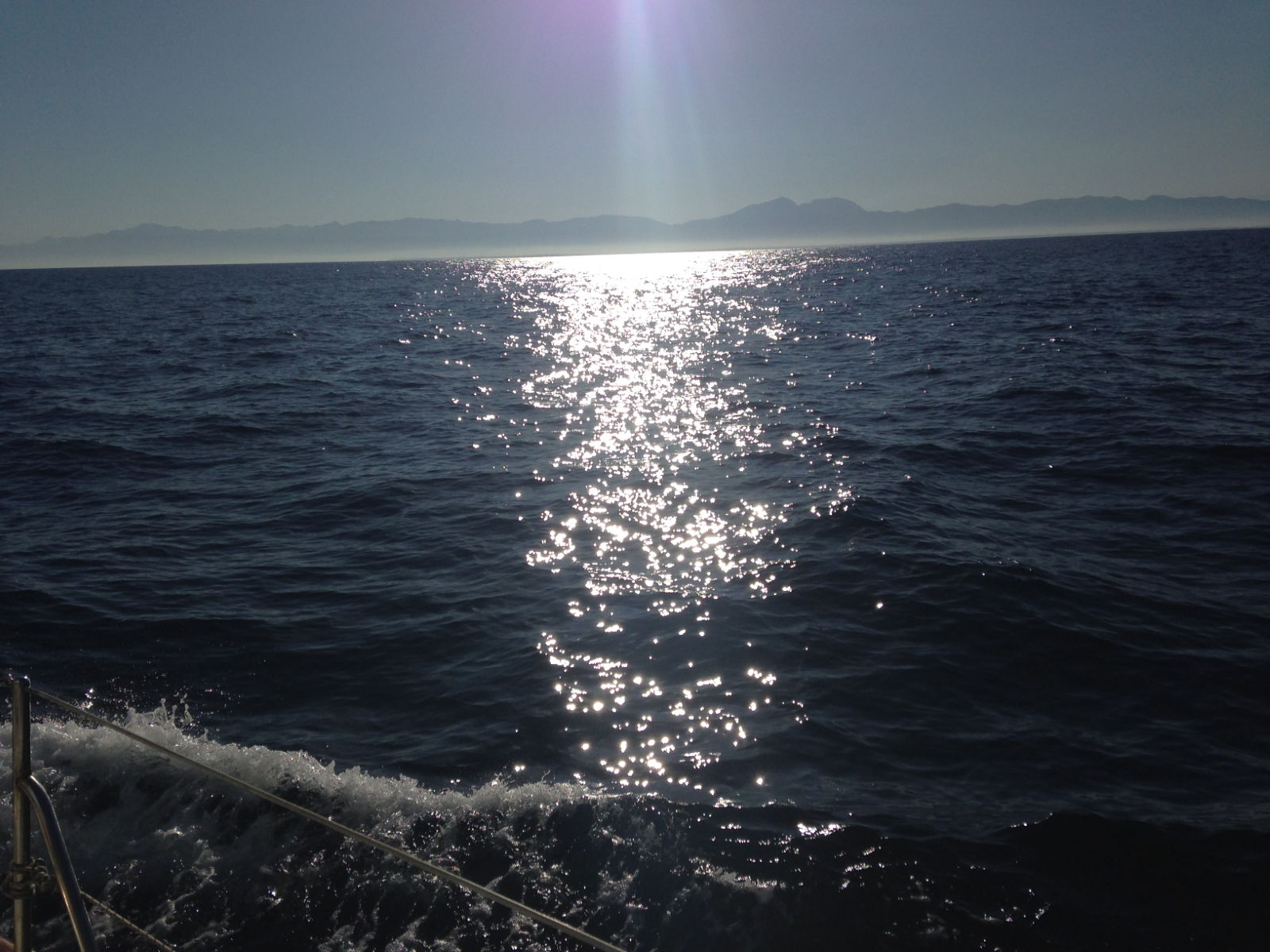
That evening, anchored for the night in a calm bay, the first incident involving an ongoing battery problem occurred. We became aware of a pungent, sulphurous smell and couldn’t work out where it was coming from until it dawned on Paul that one of the batteries must have failed. He was worried it was going to catch fire or explode so we had to clear out the quarter berth pretty quick so that he could get to them and disconnect the one that had failed. It was extremely hot to the touch and very heavy but posed no further danger once it had been removed. Unfortunately his prediction that if one failed, more were likely to proved to be correct.
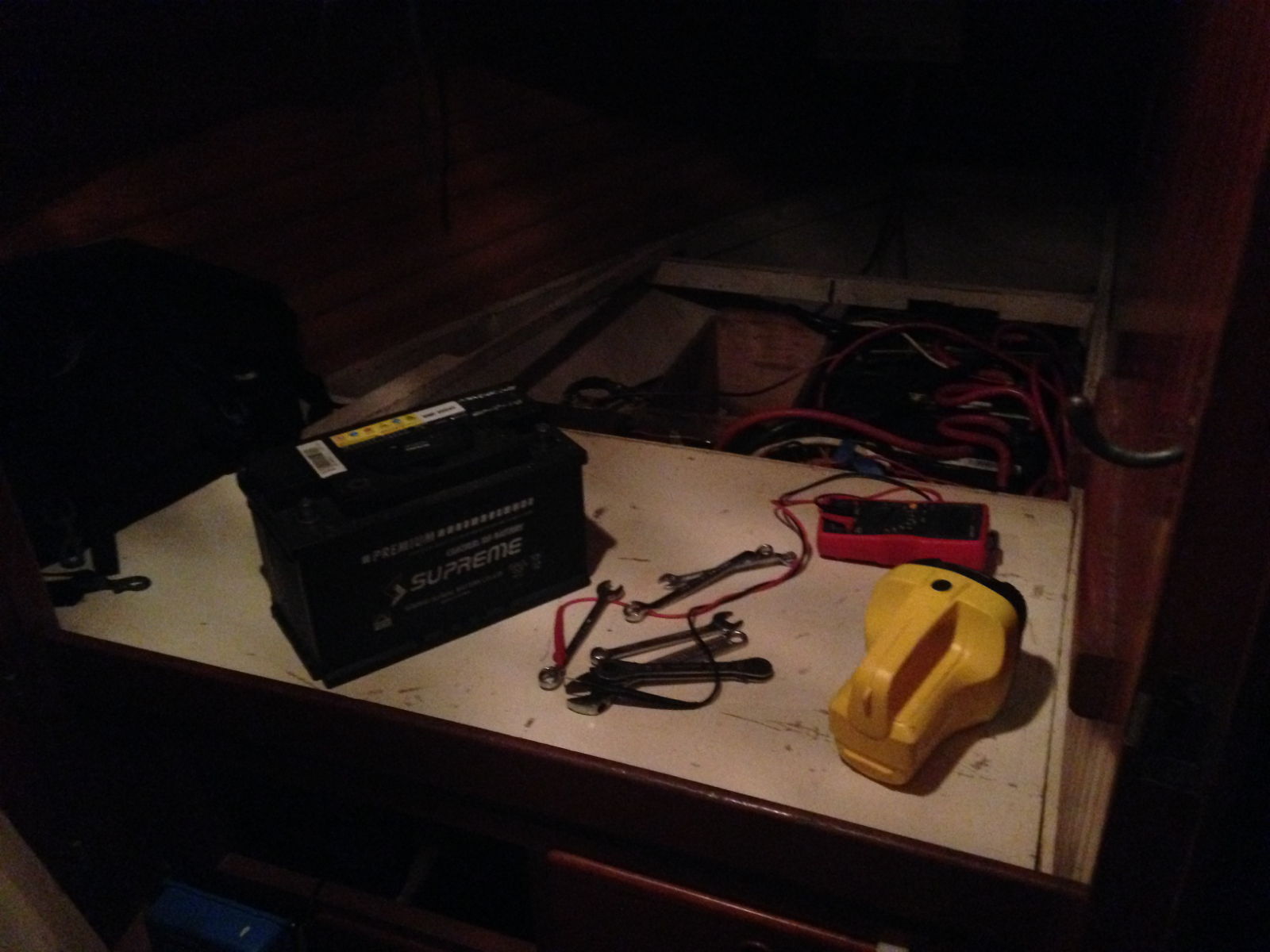

The next morning we left early for the Batanes Islands, a small group of islands in the northernmost province of the Philippines, 162 kilometres from the mainland. It was calm and peaceful and the heat in the cockpit meant we had to keep moving around to sit in the cooler shaded parts. The highlight of the day was watching the phosphorescence in the water when it got dark. Endlessly fascinating, it was like a cloak studded with glittering diamonds being dragged along beside us.
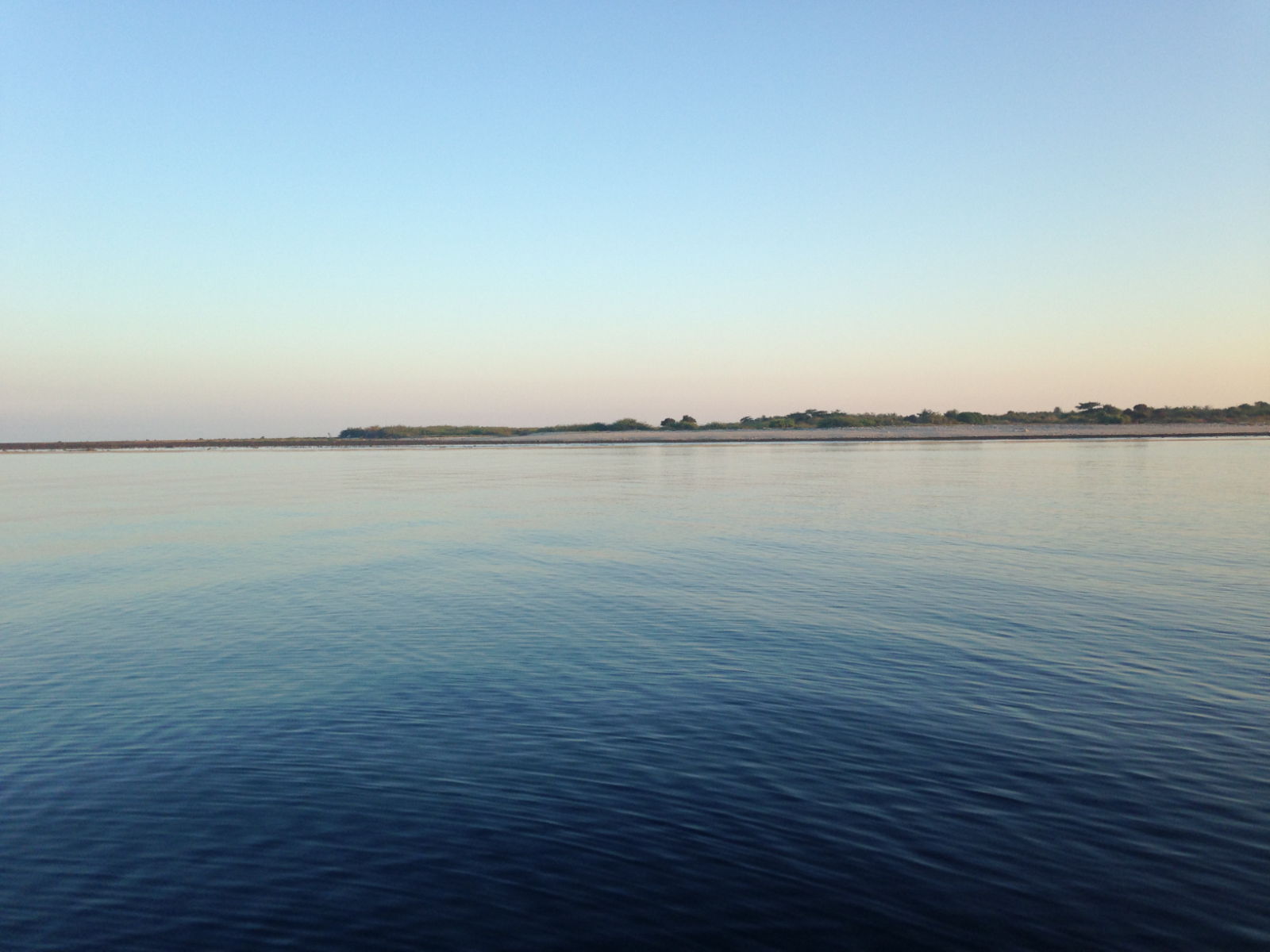
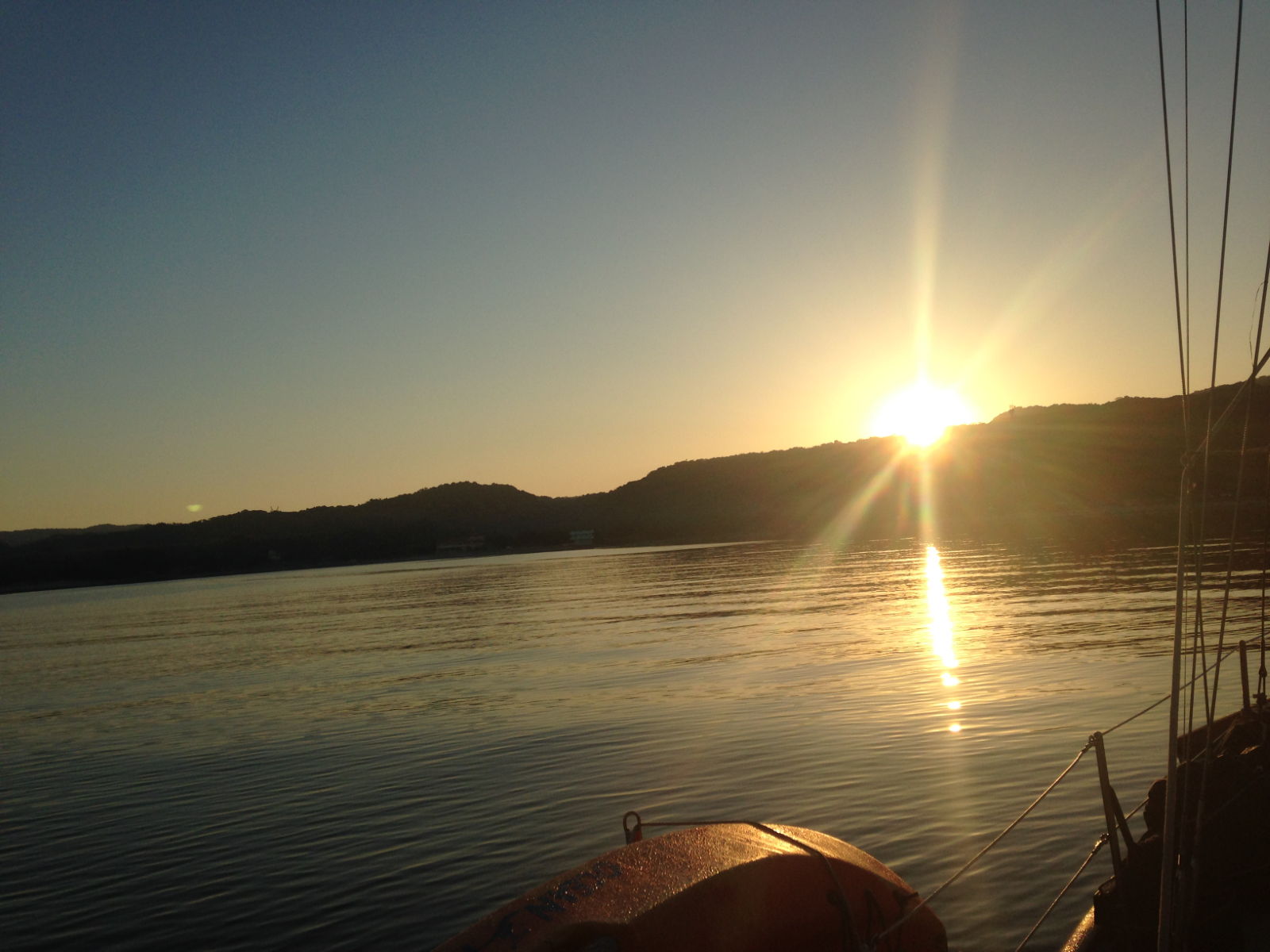
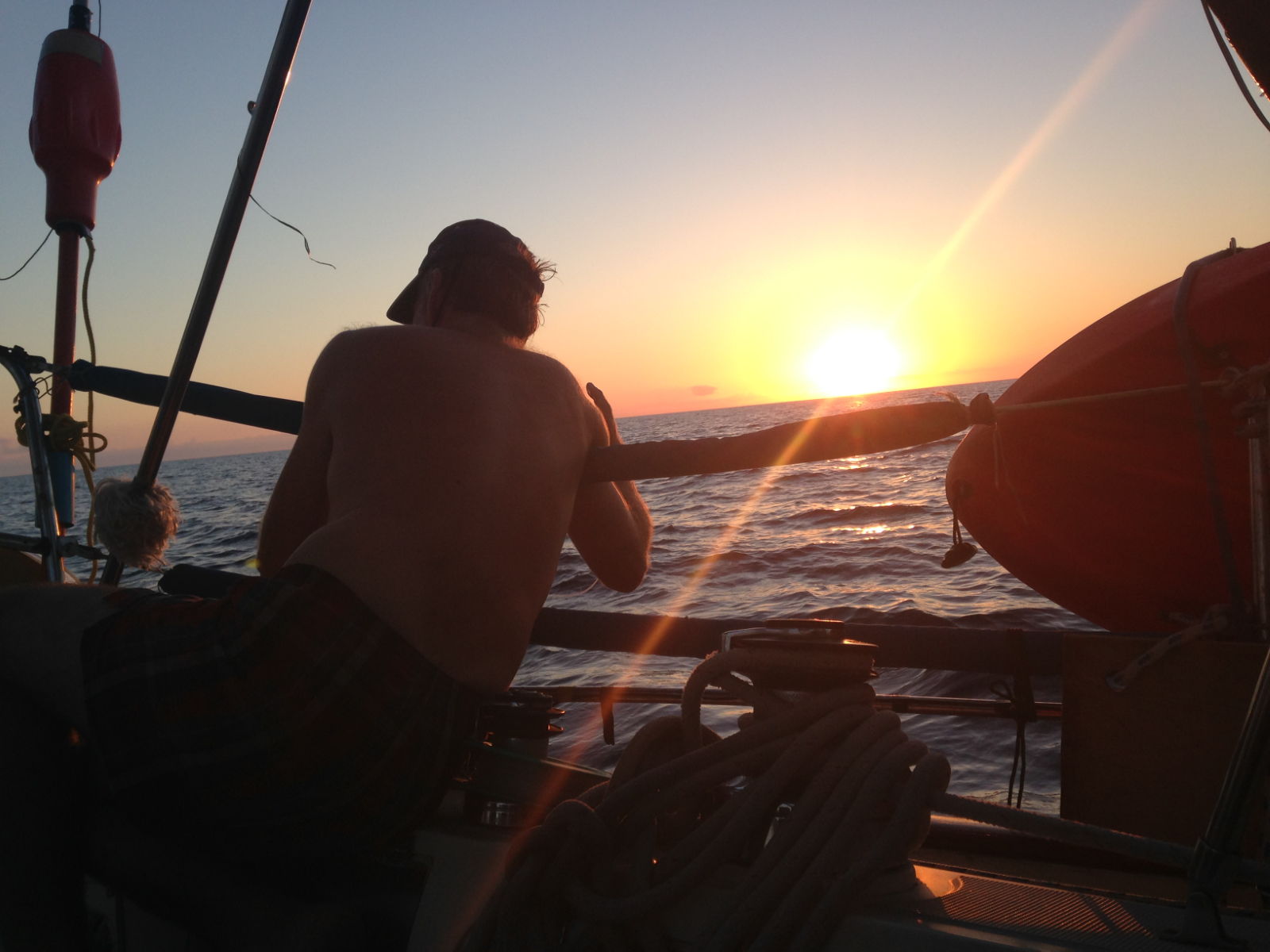
Friday April 13th saw us making for Port Basco on the northern tip of the Batanes group, which we reached at 8am. Closing in on the shallows, we spotted cultivated hills with animals that we couldn’t identify grazing on them. With the lighthouse and rugged coastline, the whole vista reminded me of parts of Cornwall or Scotland.

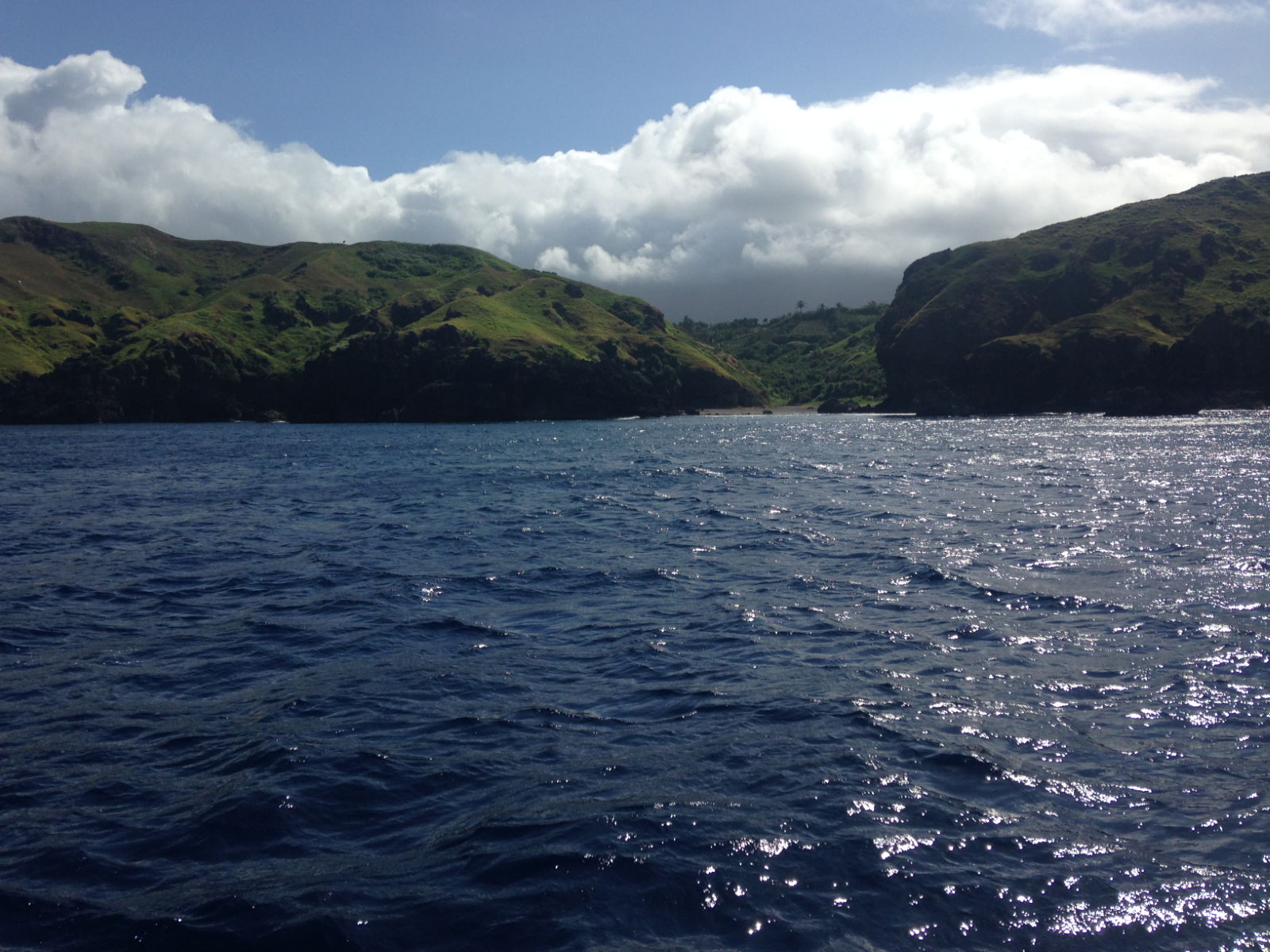
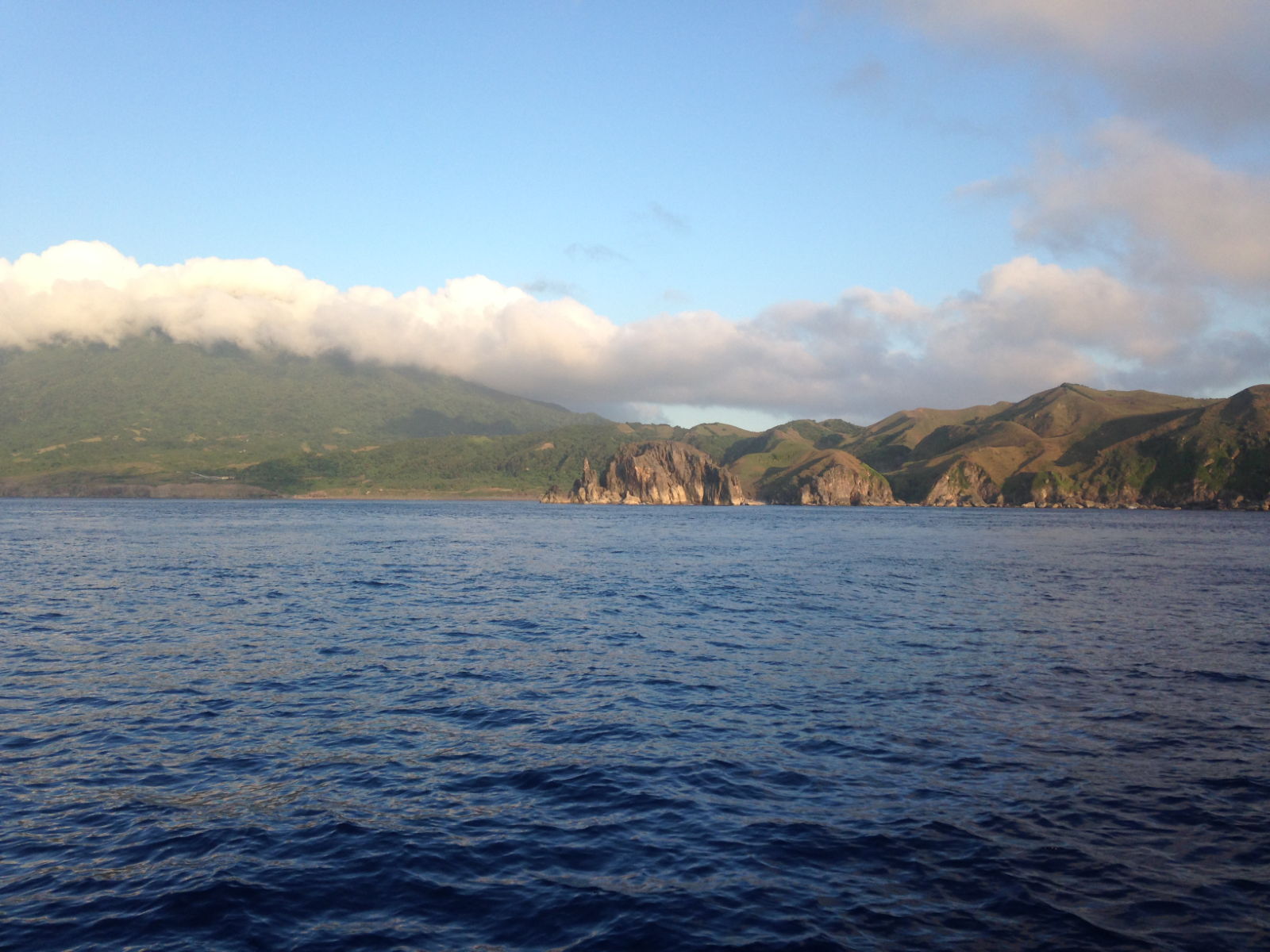
Next, we had to find a sandy area to drop anchor. The first likely place was too windy and the current was pushing us towards rocks so we headed for the harbour, using the depth sounder to locate a smooth bottom. Two huge ships were tied to a nearby jetty but hardly anyone else was around. Paul had a feeling we would be called on the radio, though and sure enough we were. The harbour master called on VHF and asked Paul to come over with the boat’s documents. Thinking we’d finished with the dinghy and outboard it had all been packed away, but out it came and off he went in it.

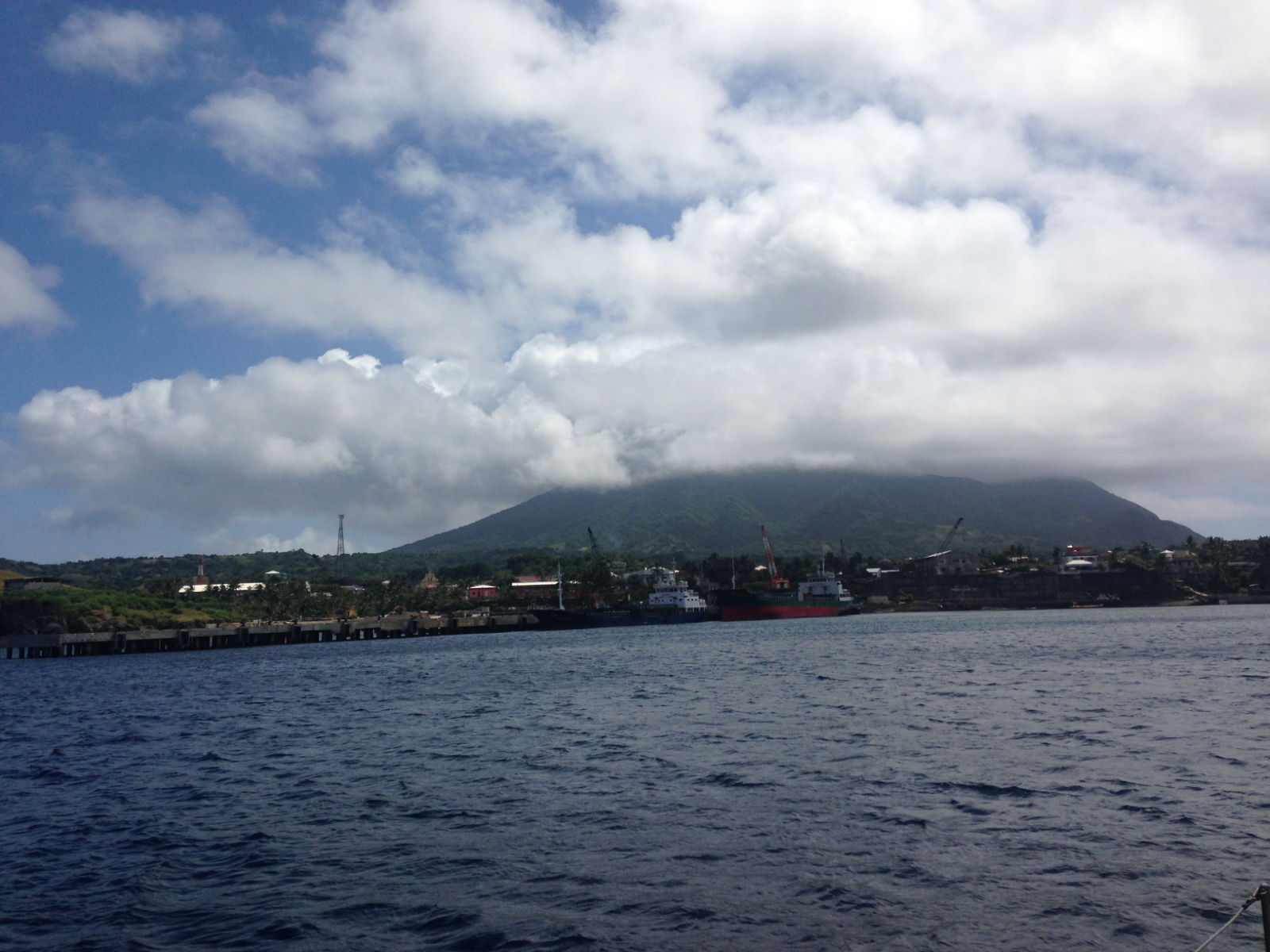
He returned half an hour later and told me that he thought they didn’t get many visitors here but we were allowed to stay anyway. I set about preparing food for the next few days (pasty fillings, soup and roasted veggies). Paul had been poring over weather forecasts and it all seemed negative. Decisions and choices were discussed and mulled over in order to avoid the worst of the weather; stay put for a few days or leave in the middle of the night. Eventually he decided we’d leave at 5pm so I quickly finished the cooking and stowing and freezing. We’re still not sure when the roughest part will be but at least we’ll be prepared.
Paul asked me if I missed the internet. I had just remarked that the days have no distinction out here, in the way that Sundays for instance, have a certain ‘feel’ to them at home, and the only way I know what the date is, is by the previous day’s journal entry. I told him that I do to a certain extent, for family and friends’ pictures and updates, the radio and news, but I don’t miss the distractions it brings. We were near Taiwan on Saturday night, a country that had once been on our agenda to visit because that’s where the Baba was built. Unfortunately we had no time spare to go there. Night temperatures were getting cooler and extra layers were coming out of lockers and drawers to combat the chill on watch. There wasn’t a lot to see or do on my afternoon watch, but looking out around 2pm I saw a huge amount of flying fish dance across the water, followed shortly afterwards by a flock of seabirds who descended on the scene as if from nowhere. I tried to get pics but wasn’t quick enough unfortunately.
For dinner, I was chuffed to be able to make some pasties for dinner using the pre-made filling and puff pastry sheets from our little freezer. Once cooked and cooled a little, we held them in our hands and ate them in the cockpit. We’ve noticed things are seeming to feel a lot damper inside the boat now. Soon the days will be slightly longer as we pull away from the equator. Paul woke me at 4am clad in his oilies for the first time. Poking my head out I realised the days of sitting up there in flimsy clothing are gone. The seats were wet with damp and the breeze was cool, though not yet cold. The stars were blurred, shrouded as they were by murky cloud instead of the sparkling diamonds on a coal-black background I had come to love. There was no moon to be seen and lightning was flashing on our port side. As it began to get lighter and there was no sunrise to view, it looked like we were heading into dark, rain-filled clouds. It turned out to be a bit more than just a rainy day at sea, however. When I mentioned the darkness to Paul he said it was just the early morning light making it appear that way. We stood for a while watching a big black and white bird that had apparently been with us throughout the night, circling the boat and perching on the spreaders. By 7am rumbles of thunder could be heard and just as Paul was hoisting the Japanese flag, rain began to fall. The wind had picked up so he put the mainsail up as the thunder got louder. I wondered if this was the storm that Paul had warned would cause ‘uphill’ sailing. Our ETA changed from Sunday evening to the early hours of Monday, meaning we had another night (or at worst, 2 or 3 more) to do.

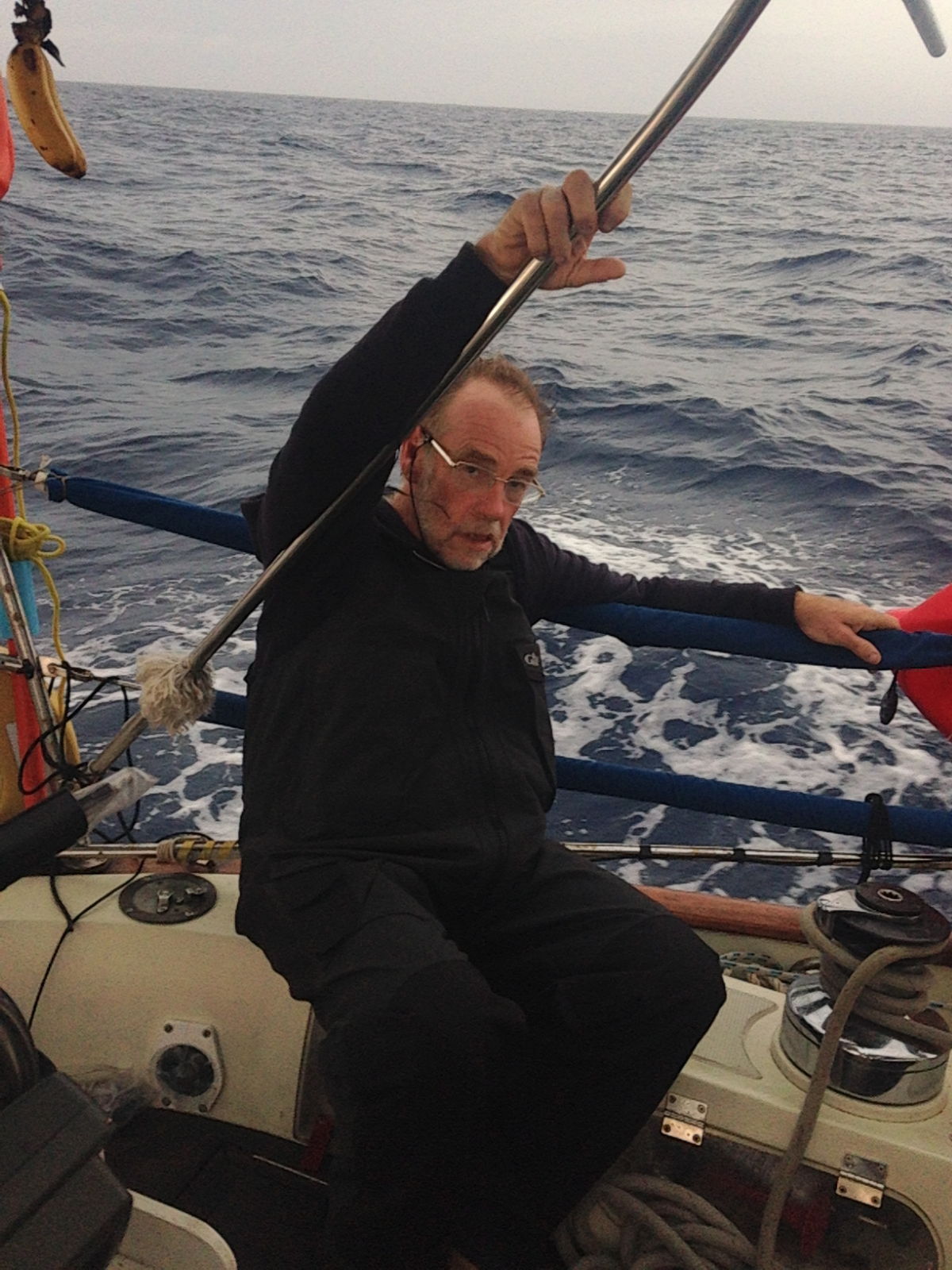
Conditions got steadily worse after 8am and all thoughts of a few hours dozing were pushed away. With the words ‘strap in, a big squall is on the way’ another period of battling against the elements began. Paul togged up and took over the steering as the rain poured down. The waves increased in height to 9 or 10 feet, creating high walls of water and we were thrown, bashed and pushed in all directions. I put my oilies on in case I was needed above but my role was to watch the radar and relay to Paul what direction to go in to get away from it. However, it seemed to hover ominously over us continually like the proverbial ‘dark cloud’. The noises were ferocious; waves banged against the hull, the wind whistled and roared, which combined with the noise of the engine meant we struggled to hear each other, and the rain pelted on the roof. For well over an hour Paul struggled above in those conditions. My heart sank when he told me he’d checked the forecast and we were in for this rough time for days! I couldn’t imagine how we’d cope with so little sleep in these conditions. Waves started to crash over the sides with alarming force.



After a while of stressing I just accepted our plight and got on with the business of adapting to it. It wasn’t dangerous and we’d just have to sit it out. Which is what we did – literally. Paul closed the hatches after making sure things were as secure as they could be and we sat in the warmth of the cabin and listened, talked and dozed. We used the AIS as a watching device and there was little likelihood of fishing boats. The force of the wind and waves first caused the boat to go nowhere and then backwards towards the Philippines. Then the birds came!

I looked up from my position on the bunk and saw a brown and white pigeon perched on the hatch peering in at us. It had a ring on its leg and didn’t fly off when we went up the steps, just shuffled around the cockpit. It was obviously intending to stay for a while. Paul put our mosquito mesh in the hatchway to prevent it coming in and flying around. I spotted another one perched on the guard rail at the stern and noticed others flying around looking for somewhere to land. In the end we had 5 or 6 pigeons and one tiny black and white bird perched at various points around the boat. The tiny bird didn’t hang around too long but the pigeons stayed and weathered the storm with us. I found some seeds and some oat-based muesli to feed them. Three huddled together in the cockpit, and two were on the coach roof. All of them had rings on, so they were clearly racing pigeons. Paul remarked that surely they were cheating by hitching a ride with us.

As it got dark, neither of us felt like eating much and the storm raged on. With the hatches battened, the birds asleep, and the equipment set up to alert us about other boats, we dug out some warm blankets and slept. It was one of the best and most memorable nights at sea for me, despite the conditions. It was cosy and warm in the cabin, and the presence of the birds sheltering with us added to the unique experience. During the night the wind reached 25 knots so Paul braved the elements to put the wind vane into operation and we all slept really well – birds included.



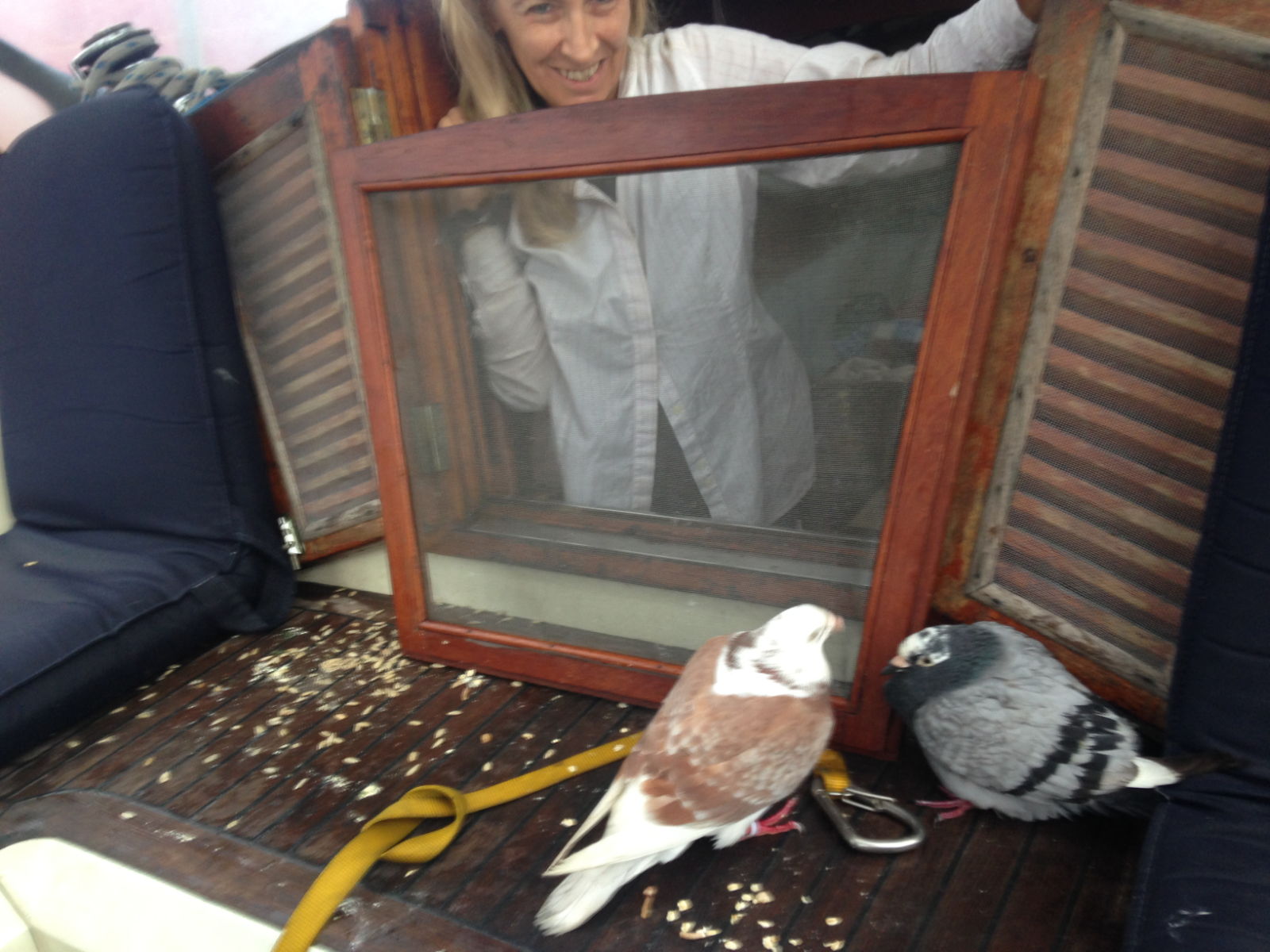
In the morning, it was a lot colder and the sky was heavy with cloud but the wind had dropped and although we were still being thrown around, the sea was calmer too. At 9 o’clock while I was on look out and Paul dozed, I saw all our five birds fly away, one after the other over the starboard side.
At last, we began to make steady progress and our new ETA for Japan was Tuesday morning. Watches were resumed and chores (cleaning up pigeon droppings being one of them) were carried out as the sea got calmer. Paul said he could see Japan at lunchtime, a far-off island hard to distinguish from the clouds, but could just about be picked out with binoculars. Our last night at sea before reaching Japan was a dark one to say the least. No moon or stars and heavy cloud cover. Visibility was poor but AIS, radar and the Navionics course on the iPad could all be viewed from the chart table so all we needed to do was have look out every so often from the warmth and safety of the steps. At some point in the night, our phones had added an hour on, revealing that Japan was 9 hours ahead of GMT. Soon, we were approaching Ishigaki, our first port of call in Japan.

Glad you survived the passage. What sails were you flying during this ordeal?
Loved the pigeon saga, hope they reached where they were going safely/Great pics x